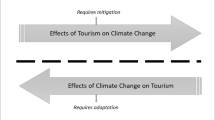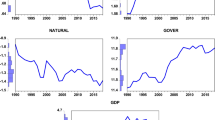Abstract
Insufficient water sources, large regional differences, and serious waste caused by leakage of water make the performance of urban water supply industry in China worth exploring. This paper proposes a metafrontier-biennial cost Malmquist productivity index approach combining metafrontier-biennial data envelopment analysis and cost function based on cost minimization. The leakage of water in the urban water supply industry is considered as an undesirable output. We purpose to evaluate total factor productivity and the decomposition of its growth, including technical efficiency, technological change, allocative efficiency, factor prices effect, catch-up effect of pure technology and relative change of potential technology through the data set of water supply industry in 226 cities of China. Findings show that the U-shaped trend in cost technology gap ratio appeared during the period from 2001 to 2016, and the production technology of cities with moderate water shortage is closest to the optimal production frontier. The growth rate of total factor productivity of urban water supply industry gradually slowed down, and even slightly decreased in 2007–2008. The growth rate of productivity among the cities with extreme water shortage, severe water shortage, moderate water shortage, mild water shortage and sufficient water resources shows an increasing trend. Furthermore, the growth of productivity is mainly due to the increase of allocative efficiency and technological progress, while the decline of factor prices effect inhibits the growth of productivity.







Similar content being viewed by others
Notes
According to the United Nations water scarcity level of classification criteria, sufficient water sources means that the per capita water resources are greater than 3000 cubic meters. Mild water shortage means that the per capita water resources are between 2000 cubic meters and 3000 cubic meters. Moderate water shortage means that the per capita water resources are between 1000 cubic meters and 2000 cubic meters. Severe water shortage means that per capita water resources are between 500 cubic meters and 1000 cubic meters, and extreme water shortage means that per capita water resources are less than 500 cubic meters.
References
Abbott, M., & Cohen, B. (2009). Productivity and efficiency in the water industry. Utilities Policy, 17(3–4), 233–244.
Ananda, J. (2018). Productivity implications of the water-energy-emissions nexus: An empirical analysis of the drinking water and wastewater sector. Journal of Cleaner Production, 196, 1097–1105.
Ananda, J., & Hampf, B. (2015). Measuring environmentally sensitive productivity growth: An application to the urban water sector. Ecological Economics, 116, 211–219.
Ananda, J., & Pawsey, N. (2019). Benchmarking service quality in the urban water industry. Journal of Productivity Analysis, 51(1), 55–72.
Anwandter, L. (2002). Can public sector reforms improve the efficiency of public water utilities? Environment and Development Economics, 7(4), 687–700.
Azad, M. A., & Ancev, T. (2014). Measuring environmental efficiency of agricultural water use: A Luenberger environmental indicator. Journal of Environmental Management, 145, 314–320.
Ball, E., Färe, R., Grosskopf, S., & Zaim, O. (2005). Accounting for externalities in the measurement of productivity growth: The Malmquist cost productivity measure. Structural Shange and Economic Dynamics, 16(3), 374–394.
Bian, Y., Yan, S., & Xu, H. (2014). Efficiency evaluation for regional urban water use and wastewater decontamination systems in China: A DEA approach. Resources, Conservation and Recycling, 83, 15–23.
Brockett, P. L., & Golany, B. (1996). Using rank statistics for determining programmatic efficiency differences in data envelopment analysis. Management Science, 42(3), 466–472.
Charnes, A., Cooper, W. W., & Rhodes, E. (1981). Evaluating program and managerial efficiency: An application of data envelopment analysis to program follow through. Management Science, 27(6), 668–697.
Chen, J., Du, M., & Huang, C. (2022). Efficiency and its influencing factors of urban water sector in China and major OECD countries. Journal of Cleaner Production, 373, 133885.
Chiu, C. R., Chiu, Y. H., Chen, Y. C., & Fang, C. L. (2016). Exploring the source of metafrontier inefficiency for various bank types in the two-stage network system with undesirable output. Pacific-Basin Finance Journal, 36, 1–13.
Chiu, C. R., Lu, K. H., Tsang, S. S., & Chen, Y. F. (2013). Decomposition of meta-frontier inefficiency in the two-stage network directional distance function with quasi-fixed inputs. International Transactions in Operational Research, 20(4), 595–611.
Cosgrove, W. J., & Loucks, D. P. (2015). Water management: Current and future challenges and research directions. Water Resources Research, 51(6), 4823–4839.
da Cruz, N. F., Carvalho, P., & Marques, R. C. (2013). Disentangling the cost efficiency of jointly provided water and wastewater services. Utilities Policy, 24, 70–77.
De Clercq, D., Smith, K., Chou, B., Gonzalez, A., Kothapalle, R., Li, C., Dong, X., Liu, S., & Wen, Z. (2018). Identification of urban drinking water supply patterns across 627 cities in China based on supervised and unsupervised statistical learning. Journal of Environmental Management, 223, 658–667.
De Witte, K., & Marques, R. C. (2010). Influential observations in frontier models, a robust non-oriented approach to the water sector. Annals of Operations Research, 181(1), 377–392.
Du, M., Feng, R., & Chen, Z. (2022a). Blue sky defense in low-carbon pilot cities: A spatial spillover perspective of carbon emission efficiency. Science of the Total Environment, 846, 157509.
Du, M., Huang, C., & Chen, Z. (2022b). Evaluating the water-saving and wastewater-reducing effects of water rights trading pilots: Evidence from a quasi-natural experiment. Journal of Environmental Management, 319, 115706.
Du, M., Liao, L., Wang, B., & Chen, Z. (2021). Evaluating the effectiveness of the water-saving society construction in China: A quasi-natural experiment. Journal of Environmental Management, 277, 111394.
Färe, R., Fèare, R., Grosskopf, S., & Lovell, C. K. (1994). Production frontiers. Cambridge University Press.
Ferro, G., & Mercadier, A. C. (2016). Technical efficiency in Chile’s water and sanitation providers. Utilities Policy, 43, 97–106.
Fisher, I. (1922). The making of index numbers: A study of their varieties, tests, and reliability (no. 1). Houghton Mifflin.
Garcia-Valiñas, M. A., & Muñiz, M. A. (2007). Is DEA useful in the regulation of water utilities? A dynamic efficiency evaluation (a dynamic efficiency evaluation of water utilities). Applied Economics, 39(2), 245–252.
Hall, R. E., & Jones, C. I. (1999). Why do some countries produce so much more output per worker than others? The Quarterly Journal of Economics, 114(1), 83–116.
Higuerey, A., Trujillo, L., & González, M. M. (2017). Has efficiency improved after the decentralization in the water industry in Venezuela? Utilities Policy, 49, 127–136.
Hu, J. L., Wang, S. C., & Yeh, F. Y. (2006). Total-factor water efficiency of regions in China. Resources Policy, 31(4), 217–230.
Huang, M. Y., Juo, J. C., & Fu, T. T. (2015). Metafrontier cost Malmquist productivity index: An application to Taiwanese and Chinese commercial banks. Journal of Productivity Analysis, 44(3), 321–335.
Li, Y., Chiu, Y. H., Li, Y., Cen, H., & Lin, T. Y. (2021). Dynamic analysis of residential and enterprise water supply and leakage efficiencies. Environmental Science and Pollution Research, 28(29), 39471–39492.
Lu, X., & Xu, C. (2019). The difference and convergence of total factor productivity of inter-provincial water resources in China based on three-stage DEA-Malmquist index model. Sustainable Computing: Informatics and Systems, 22, 75–83.
Lu, Y. H., Chiu, Y. H., Chiu, C. R., & Hung, Y. C. (2014). Two-stage efficiency measurement and technological heterogeneity: Evidence from the biotechnological industry in Taiwan. Asia-Pacific Journal of Operational Research, 31(01), 1450007.
Maniadakis, N., & Thanassoulis, E. (2004). A cost Malmquist productivity index. European Journal of Operational Research, 154(2), 396–409.
Maziotis, A., Molinos-Senante, M., & Sala-Garrido, R. (2017). Assesing the impact of quality of service on the productivity of water industry: A Malmquist–Luenberger approach for England and Wales. Water Resources Management, 31(8), 2407–2427.
Mbuvi, D., De Witte, K., & Perelman, S. (2012). Urban water sector performance in Africa: A step-wise bias-corrected efficiency and effectiveness analysis. Utilities Policy, 22, 31–40.
Molinos-Senante, M., Gémar, G., Gómez, T., Caballero, R., & Sala-Garrido, R. (2016). Eco-efficiency assessment of wastewater treatment plants using a weighted Russell directional distance model. Journal of Cleaner Production, 137, 1066–1075.
Molinos-Senante, M., Maziotis, A., & Sala-Garrido, R. (2014). The Luenberger productivity indicator in the water industry: An empirical analysis for England and Wales. Utilities Policy, 30, 18–28.
Molinos-Senante, M., Maziotis, A., & Sala-Garrido, R. (2017). Assessing the productivity change of water companies in England and Wales: A dynamic metafrontier approach. Journal of Environmental Management, 197, 1–9.
Molinos-Senante, M., & Sala-Garrido, R. (2017). Decomposition of productivity growth of water and sewerage companies: An empirical approach for Chile. Water Resources Management, 31(13), 4309–4321.
Norton, J. W., Jr., & Weber, W. J., Jr. (2009). Water utility efficiency assessment using a data envelopment analysis procedure. Journal of Infrastructure Systems, 15(2), 80–87.
O’Donnell, C. J., Rao, D. S., & Battese, G. E. (2008). Metafrontier frameworks for the study of firm-level efficiencies and technology ratios. Empirical Economics, 34(2), 231–255.
Pastor, J. T., Asmild, M., & Lovell, C. K. (2011). The biennial Malmquist productivity change index. Socio-Economic Planning Sciences, 45(1), 10–15.
Picazo-Tadeo, A. J., Sáez-Fernández, F. J., & González-Gómez, F. (2009). The role of environmental factors in water utilities’ technical efficiency. Empirical evidence from Spanish companies. Applied Economics, 41(5), 615–628.
Pointon, C., & Matthews, K. (2016). Dynamic efficiency in the English and Welsh water and sewerage industry. Omega, 58, 86–96.
Portela, M. C. A. S., Thanassoulis, E., Horncastle, A., & Maugg, T. (2011). Productivity change in the water industry in England and Wales: Application of the meta-Malmquist index. Journal of the Operational Research Society, 62(12), 2173–2188.
Romano, G., & Guerrini, A. (2011). Measuring and comparing the efficiency of water utility companies: A data envelopment analysis approach. Utilities Policy, 19(3), 202–209.
Romano, G., Molinos-Senante, M., & Guerrini, A. (2017). Water utility efficiency assessment in Italy by accounting for service quality: An empirical investigation. Utilities Policy, 45, 97–108.
Saal, D. S., Parker, D., & Weyman-Jones, T. (2007). Determining the contribution of technical change, efficiency change and scale change to productivity growth in the privatized English and Welsh water and sewerage industry: 1985–2000. Journal of Productivity Analysis, 28(1–2), 127–139.
Sala-Garrido, R., Molinos-Senante, M., & Mocholí-Arce, M. (2018). Assessing productivity changes in water companies: A comparison of the Luenberger and Luenberger–Hicks–Moorsteen productivity indicators. Urban Water Journal, 15(7), 626–635.
See, K. F., & Ma, Z. (2018). Does non-revenue water affect Malaysia’s water services industry productivity? Utilities Policy, 54, 125–131.
Song, M., Wang, R., & Zeng, X. (2018). Water resources utilization efficiency and influence factors under environmental restrictions. Journal of Cleaner Production, 184, 611–621.
Sun, Y., Ding, W., Yang, Z., Yang, G., & Du, J. (2020). Measuring China’s regional inclusive green growth. Science of the Total Environment, 713, 136367.
Ye, Q., Li, Y., Zhuo, L., Zhang, W., Xiong, W., Wang, C., & Wang, P. (2018). Optimal allocation of physical water resources integrated with virtual water trade in water scarce regions: A case study for Beijing, China. Water Research, 129, 264–276.
Zhou, X., Luo, R., Yao, L., Cao, S., Wang, S., & Lev, B. (2018). Assessing integrated water use and wastewater treatment systems in China: A mixed network structure two-stage SBM DEA model. Journal of Cleaner Production, 185, 533–546.
Zhou, Z., Wu, H., & Song, P. (2019). Measuring the resource and environmental efficiency of industrial water consumption in China: A non-radial directional distance function. Journal of Cleaner Production, 240, 118169.
Zschille, M. (2015). Consolidating the water industry: An analysis of the potential gains from horizontal integration in a conditional efficiency framework. Journal of Productivity Analysis, 44(1), 97–114.
Acknowledgements
This paper is supported by the Guangzhou Philosophy and Social Science Planning 2020 Annual Project (2020GZGJ57).
Author information
Authors and Affiliations
Corresponding author
Ethics declarations
Conflict of interest
The authors declare no competing interests.
Additional information
Publisher's Note
Springer Nature remains neutral with regard to jurisdictional claims in published maps and institutional affiliations.
Rights and permissions
Springer Nature or its licensor (e.g. a society or other partner) holds exclusive rights to this article under a publishing agreement with the author(s) or other rightsholder(s); author self-archiving of the accepted manuscript version of this article is solely governed by the terms of such publishing agreement and applicable law.
About this article
Cite this article
Du, M., Wang, B., Chen, Z. et al. Productivity evaluation of urban water supply industry in China: a metafrontier-biennial cost Malmquist productivity index approach. Ann Oper Res (2023). https://doi.org/10.1007/s10479-023-05294-6
Accepted:
Published:
DOI: https://doi.org/10.1007/s10479-023-05294-6




